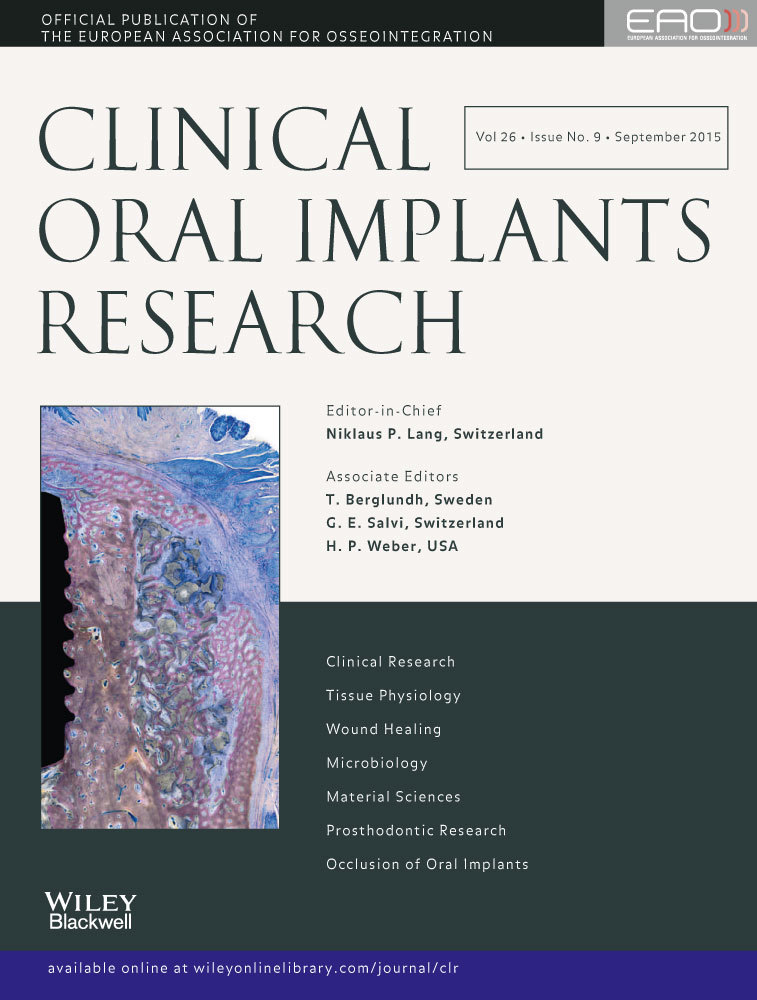Peri-implant evaluation in type 2 diabetes mellitus patients: a 3-year study
Abstract
Objective
The aim of this study was to analyze the changes produced in peri-implant tissues in type 2 diabetes mellitus patients with different glycemia levels, measured by monitoring glycated hemoglobin A1c (HbA1c), over a period of 3 years following dental implant placement.
Materials and methods
Sixty-seven patients were divided into four groups according to their HbA1c levels: 21 patients in Group 1 (<6); 24 patients in Group 2 (6.1–8); and 11 patients in Group 3 (8.1–10) and Group 4 (>10.1). Each patient received one implant. All implants were placed in the anterior zone of the maxilla. The variables selected to assess the general state of patients' peri-implant health were as follows: probing depth, bleeding on probing, and marginal bone loss.
Results
Marginal bone loss was found to increase in relation to increases in HbA1c levels. Bleeding on probing showed statistically significant differences between groups. When the peri-implant area was probed, mean levels of bleeding varied from 0.43 in Group 1 at 1 year after implant surgery to 0.62 in Group 4 (P = 0.042 between the four study groups). After the second year, greater bleeding on probing was observed in Group 4 (0.63) in comparison with groups with lower HbA1c levels. Peri-implant pocket depths presented values that were too low to be considered pathological and without statistically significant differences between the study groups.
Conclusion
Implant therapies for diabetic patients can be predictable, providing these patients fall within controlled ranges of glycemia over time, assessed by monitoring HbA1c levels.




